In This Article
Want to soak in more beauty beyond your base town? In this post, I’ll share the elegant villas, hillside towns, and sparkling ferry rides around Lake Como—where Italian charm and alpine beauty make every day trip a dream. These trips offer postcard-perfect villages, historic villas, and stunning ferry rides—all easy to reach in a day!
If you are in a hurry, I recommend:
- Visit Bellagio for cobbled lanes, boutique shops, and lake views.
- Stroll the gardens of Villa Carlotta in Tremezzo.
- Explore the charming waterfront town of Varenna and its romantic promenade.
- Take a ferry to Como city for culture, shopping, and funicular views.
- Discover Villa del Balbianello, a cinematic gem perched on a wooded peninsula.
Unique Day Trips Around Lake Como:
1. Autodromo Nazionale Monza - a 30-minute drive from Milan
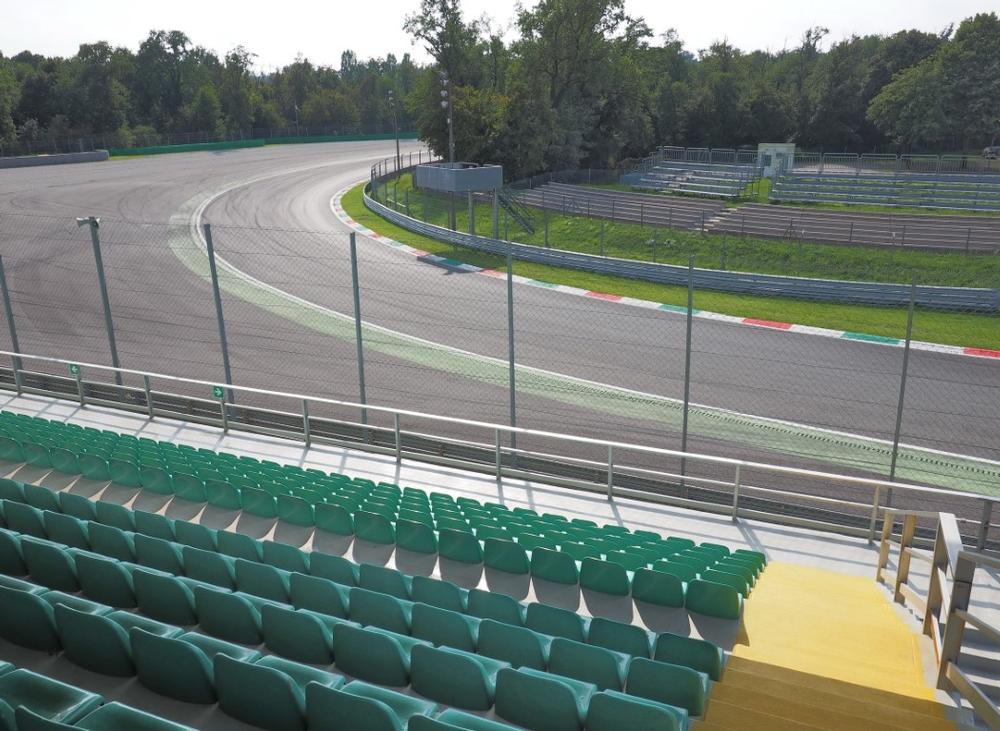
© Luca/stock.adobe.com
Location:
Monza, Italy
Highlights:
If you're into high-speed thrills or legendary motorsport history,
Autodromo Nazionale Monza is an absolute must. This iconic racing circuit—known as the Temple of Speed—has been electrifying fans since 1922.
Recommended For:
Motorsport enthusiasts, history buffs, adrenaline seekers, and anyone eager to experience one of the world's most legendary racetracks.
What I Love: ♥
Guided tours, the chance to ride with a pro, racing simulators, and a rich history rooted in nearly a century of international racing.
- Tour the track with knowledgeable guides and discover its nearly 100-year racing legacy.
- Experience heart-pounding speed with a professional driver or go virtual in high-tech simulators.
- Learn at themed workshops and plan your visit around exciting race-day events.
- Tickets include three-day passes; kids under 11 get in free on the circular lawn and enjoy reduced pricing in the stands.
Distance from Milan:
It's just about a 30-minute drive northeast of Milan city center.
How to Get to Autodromo Nazionale Monza:
Head northeast from Milan toward Monza Park. The track is located within the park and is accessible via local trains to Monza Station, then by taxi or shuttle to the circuit.
2. Bergamo - 50 minutes by train from Milan
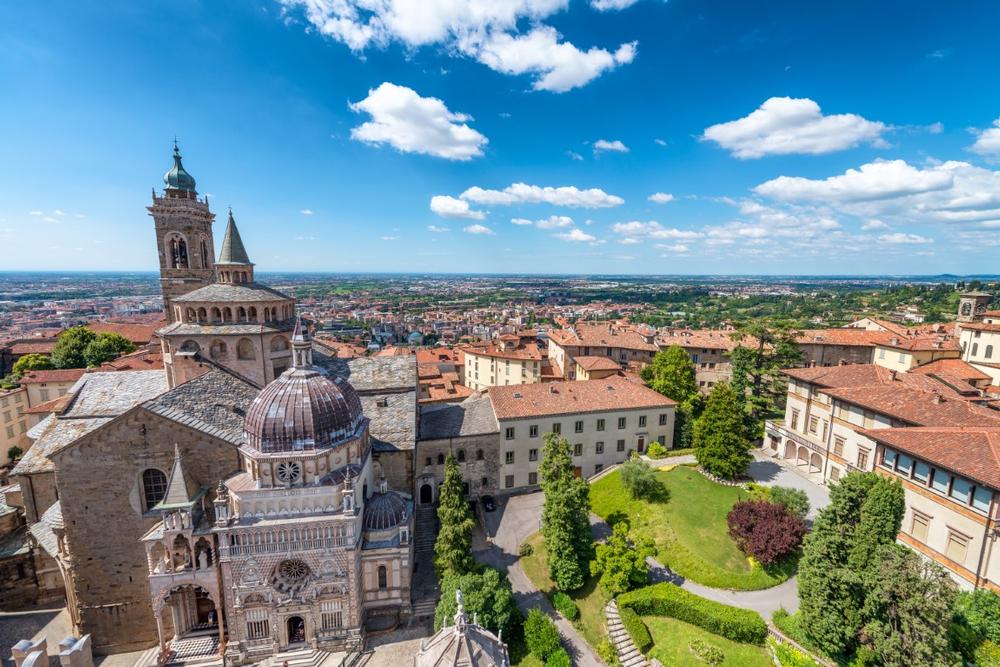
© jovannig/stock.adobe.com
Location:
Bergamo, Italy
Highlights:
If you’re craving a place where art, music, and history meet in a stunning hillside setting, we’d say don’t miss
Bergamo. It’s one of those enchanting cities that effortlessly blends cultural richness with breathtaking views.
Recommended For:
Art lovers, music aficionados, history enthusiasts, architecture admirers, and anyone looking for a soulful Italian escape.
What I Love: ♥
The romantic charm of Upper Bergamo, Donizetti’s legacy, panoramic hilltop walks, and world-class galleries like Accademia Carrara.
- Visit Donizetti’s preserved home and Museo Donizettiano to see personal belongings of one of opera’s greats.
- Admire stunning works of art at the Accademia Carrara Picture Gallery, one of Italy’s top art collections.
- Stroll the scenic walkways of Hills Park for unbeatable mountain and valley views.
- Explore the city's rich architectural tapestry—from medieval towers to 18th-century palaces and majestic cathedrals.
Distance from Milan:
Around 1 hour by car or 50 minutes by train from Milan.
How to Get to Bergamo:
Take a regional train from Milan Centrale to Bergamo Station, or drive east on the A4 Autostrada for about 50 km. Once there, explore Upper Bergamo via the historic funicular or on foot.
3. Borromean Islands - 90 minutes by train and ferry

© EleSi/stock.adobe.com
Location:
Lake Maggiore, Northern Italy
Highlights:
If you’re dreaming of island-hopping through history, gardens, and storybook villas, the
Borromean Islands are pure magic. Set in the middle of Lake Maggiore, this group of islands has charmed everyone from royalty to Hemingway himself.
Recommended For:
Garden lovers, history fans, architecture buffs, romance seekers, and those craving a peaceful lakeside escape with cultural depth.
What I Love: ♥
The grand Borromean palaces, blooming botanical gardens, noble villas, and sweeping lake views that make every step feel like a postcard.
- Explore Isola Bella’s magnificent 17th-century palazzo, filled with opulent rooms and dramatic Italianate gardens.
- Wander through Isola Madre’s lush botanical gardens—home to rare, exotic flora and peacocks that roam freely.
- Admire the aristocratic charm of lakeside villas and the dramatic Rock of Marghera rising from the water.
- Discover the legacy of the Borromeo family, whose vision turned these islands into cultural and horticultural masterpieces.
Distance from Milan:
Roughly 1 hour and 30 minutes by car or 90 minutes by train and ferry.
How to Get to the Borromean Islands:
From Milan, take a train to Stresa or Verbania, then hop on a ferry to the islands. Boats run frequently between Isola Bella, Isola Madre, and Isola dei Pescatori.
4. Castles of Bellinzona - 1 hour and 45 minutes by car
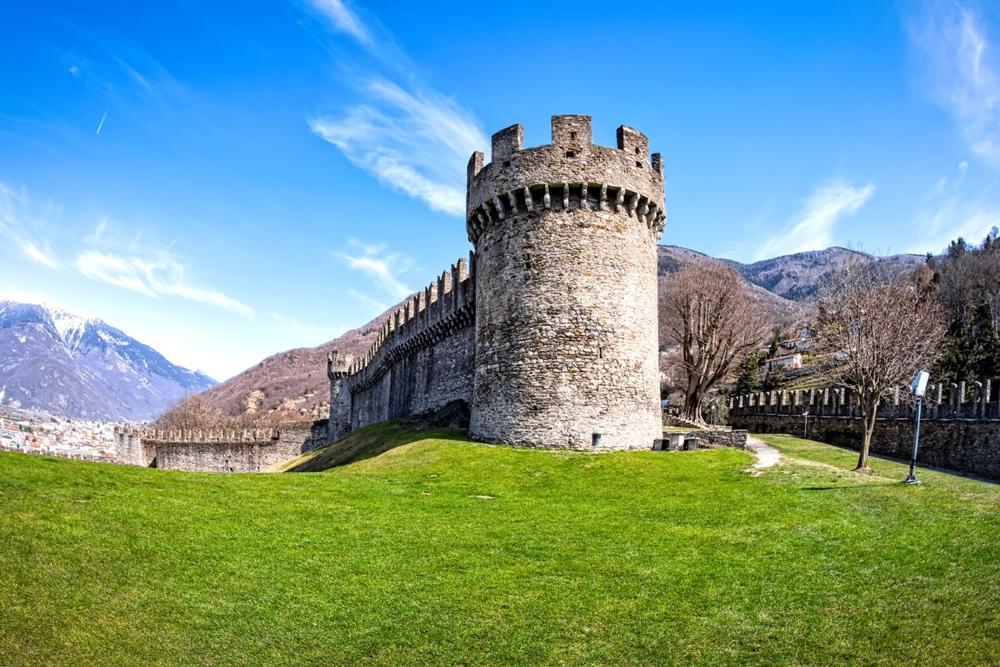
© EKH-Pictures/stock.adobe.com
Location:
Bellinzona, Ticino, Switzerland
Highlights:
If you’re looking to step straight into a medieval storybook, the
Castles of Bellinzona are an unforgettable experience. With sweeping views, epic towers, and rich history, these castles bring the past to life in the most scenic way.
Recommended For:
History lovers, architecture fans, families, photographers, and travelers wanting to explore Switzerland’s only group of medieval fortresses on the UNESCO list.
What I Love: ♥
The black and white tower of Castelgrande, panoramic walks on Montebello’s walls, and the high-elevation views from Sasso Corbaro—plus a nearby art villa for modern inspiration.
- Tour Castelgrande, the largest of the three castles, which includes a museum, panoramic tower, and on-site restaurant.
- Walk along the scenic ramparts of Montebello and explore its small but fascinating museum.
- Climb to Sasso Corbaro, the highest castle with breathtaking views of the entire region—ideal for sunset photos.
- Visit the Villa dei Cedri Museum, just a short walk away, for art exhibitions inside a 19th-century villa and tranquil park setting.
Distance from Milan:
About 1 hour and 45 minutes by car, or 2 hours by train.
How to Get to the Castles of Bellinzona:
From Milan, take a train to Bellinzona Station. From there, it’s a short walk or local bus ride to the castles—each one is well-marked and accessible via paved paths or shuttle during peak season.
5. Crespi d'Adda - 45 minutes by car
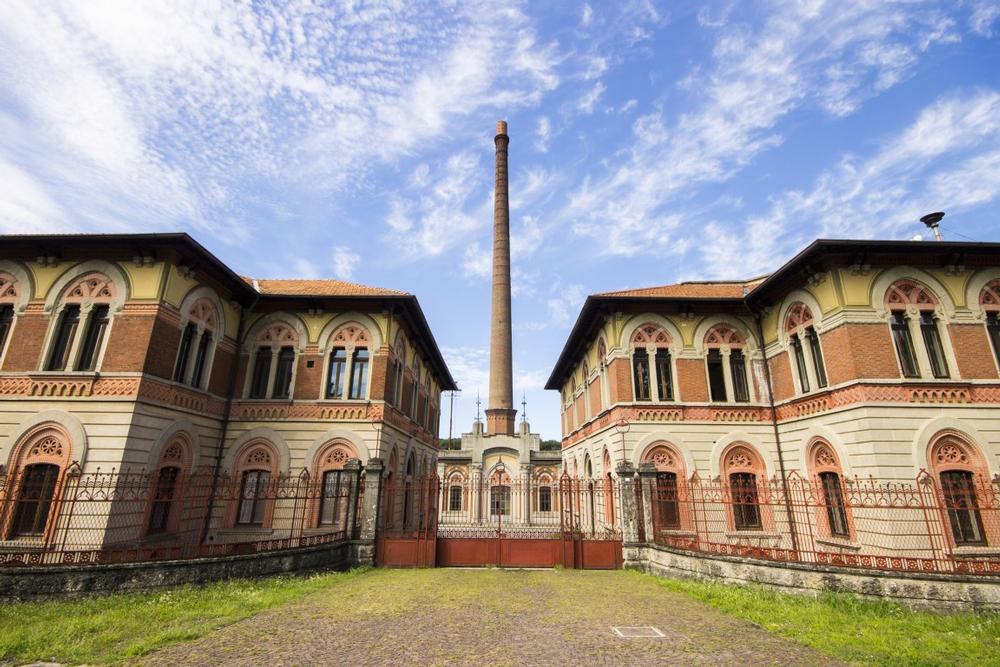
© J. Ossorio Castillo/stock.adobe.com
Location:
Crespi d'Adda, Lombardy, Italy
Highlights:
If you’ve ever wanted to time-travel to a perfectly preserved 19th-century industrial village,
Crespi d'Adda is a fascinating detour. This UNESCO World Heritage Site tells the story of a company town built with care, vision, and surprising humanity.
Recommended For:
History lovers, architecture enthusiasts, urban planning buffs, and travelers curious about life during the industrial revolution.
What I Love: ♥
The harmony of factory life and community design, original homes and gardens still standing, and the surreal sense of stepping into a living museum.
- Explore the well-preserved cotton mill, which formed the heart of the village’s economy.
- Admire the Crespi family castle, a striking symbol of industrial-era paternalism.
- Visit the historic church, washhouse, and cemetery—all built for and by the workers of the Crespi enterprise.
- Experience a rare glimpse into a utopian industrial model where workers lived, worked, and thrived in a thoughtfully designed village.
Distance from Milan:
About 45 minutes by car or just over 1 hour by train and bus.
How to Get to Crespi d'Adda:
From Milan, take a train to Bergamo or Capriate San Gervasio, then a short bus or taxi ride will bring you to the village. Walking tours are available and recommended to appreciate the layout and stories behind each structure.
Romantic Day Trips Around Lake Como:
6. Lake Garda - 1 hour and 30 minutes by car
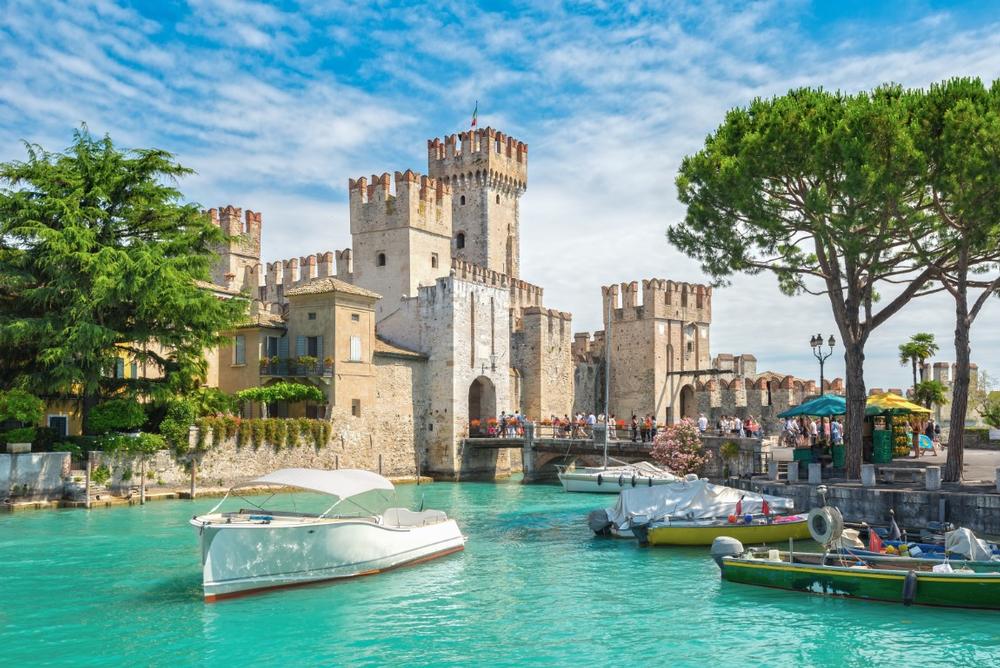
© Rene Hartmann/stock.adobe.com
Location:
Northern Italy (between Lombardy, Veneto, and Trentino-Alto Adige)
Highlights:
If you’re looking for a lake escape that feels like a dreamy mix of Mediterranean beauty and Alpine drama,
Lake Garda delivers on every level. Italy’s largest lake stuns with turquoise waters, charming villages, and lush landscapes that beg you to linger.
Recommended For:
Nature lovers, leisure travelers, photographers, wellness seekers, and anyone wanting a serene yet culturally rich getaway.
What I Love: ♥
The vibrant lemon and olive groves, transparent turquoise water, lakeside castles, and postcard-worthy historic villages scattered along the shoreline.
- Stroll through olive-lined paths and citrus groves, surrounded by oleander flowers and cypress trees in a balmy Mediterranean climate.
- Visit historical sites like Arco Castle, Bettoni Palace, and the elegant Callas Palace overlooking the water.
- Discover charming medieval towns, civic towers, observatories, and tranquil parks that offer moments of peace and culture.
- Relax in botanical gardens or explore spiritual sites like the Comboni Missionary Center nestled in scenic surroundings.
Distance from Milan:
About 1 hour and 30 minutes by car depending on your final lakeside destination.
How to Get to Lake Garda:
From Milan, drive east via the A4 Autostrada or take a train to Desenzano del Garda or Peschiera del Garda, both well-connected hubs on the lake’s southern shore.
7. Lake Lugano - 1 hour by car from Milan
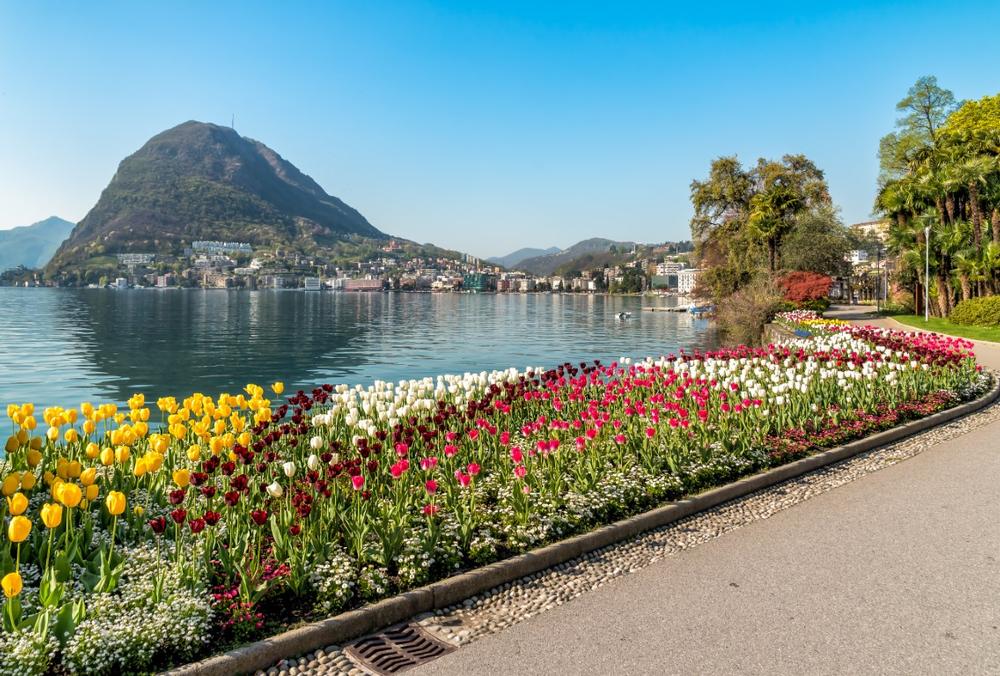
© EleSi/stock.adobe.com
Location:
Lake Lugano, Ticino, Switzerland (bordering Northern Italy)
Highlights:
If you want a touch of Swiss elegance blended with Italian flair,
Lake Lugano is the perfect getaway. From fossil-rich mountains to stylish lakeside strolls, this border-town destination is packed with personality and charm.
Recommended For:
Boutique shoppers, nature lovers, fossil enthusiasts, couples, and travelers looking for a scenic yet cosmopolitan retreat.
What I Love: ♥
The old town’s stylish promenades, Triassic fossil finds at Monte San Giorgio, lush lakeside parks, and the unique cultural blend of Swiss precision and Italian soul.
- Shop in high-end boutiques throughout the vibrant town center, a magnet for lovers of European fashion.
- Explore the peaceful waterfront promenades and beautifully maintained public gardens.
- Hike or take a scenic boat ride around the lake’s mountainous perimeter for unforgettable views.
- Visit Monte San Giorgio, a UNESCO site known for mid-Triassic fossils dating back over 220 million years.
Distance from Milan:
Roughly 1 hour by car or 1 hour and 20 minutes by train.
How to Get to Lake Lugano:
From Milan, take a direct train from Milano Centrale to Lugano Station, or drive via the A9 and A2 motorways across the Swiss border. The lakefront is walkable from the station.
8. Lake Maggiore - Around 1 hour and 30 minutes from Milan
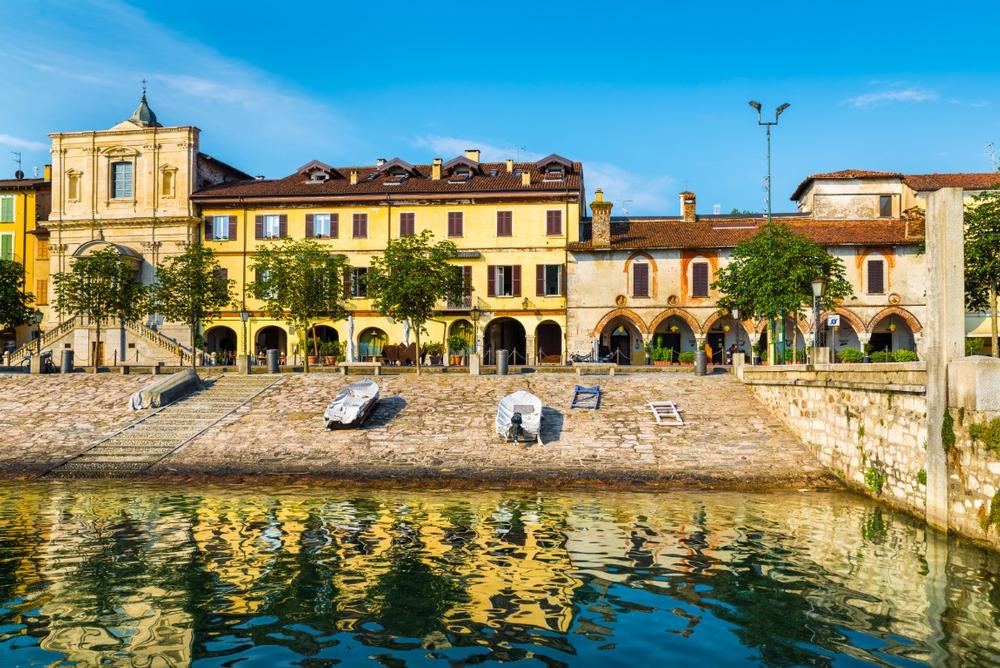
© AleMasche72/stock.adobe.com
Location:
Lake Maggiore, Italy and Switzerland
Highlights:
If you’re after a mix of lakeside beauty, historic villages, and cultural gems,
Lake Maggiore is calling. With postcard-perfect towns, islands full of art, and garden-draped villas, this is northern Italy at its most serene and elegant.
Recommended For:
Cultural travelers, garden and architecture lovers, island hoppers, history fans, and anyone looking for a refined lake escape.
What I Love: ♥
The charm of lakeside towns like Cannobio and Ghiffa, the dreamy Borromean Islands, and panoramic views across both Italian and Swiss shores.
- Explore Cannobio, Ghiffa, Cannero, and Oggebbio—each with unique stories and stunning views of the lake.
- Visit Ghiffa’s Hat Museum or the dramatic Baroque chapels overlooking the water.
- Discover the ruins of the Castles of Cannero just offshore, accessible by boat or from scenic viewpoints.
- Wander past stately mansions and gardens along the lake road, or head into the hills to soak in centuries-old village charm.
- Relax or get active on the Borromean Islands—home to museums, gardens, and outdoor recreation from kayaking to scenic walking paths.
Distance from Milan:
Around 1 hour and 30 minutes by car, depending on your destination on the lake.
How to Get to Lake Maggiore:
Drive or take a train from Milan to towns like Stresa, Verbania, or Cannobio. Ferries and scenic drives connect the lakeside towns and island stops.
Family Day Trips Around Lake Como:
9. Lake Orta - 1 hour and 30 minutes from Milan
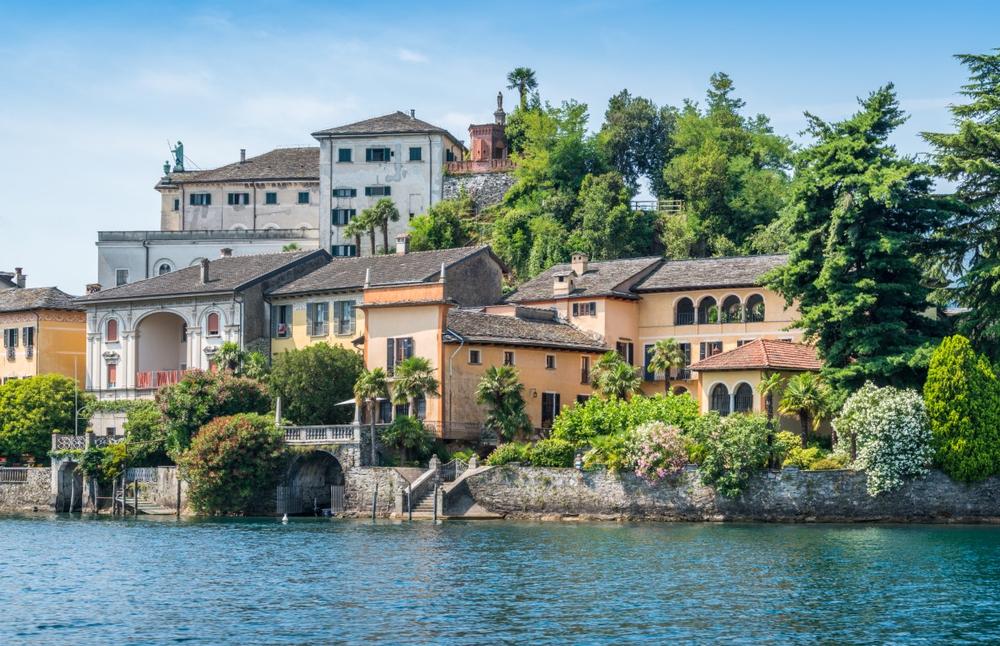
© e55evu/stock.adobe.com
Location:
Lake Orta, Piedmont, Northern Italy
Highlights:
If you’re longing for a peaceful lake escape far from the crowds,
Lake Orta is your quiet, romantic hideaway. Tucked beneath the southern Swiss Alps, this lesser-known gem invites slow strolls, scenic boat rides, and cobblestone village charm.
Recommended For:
Couples, solo travelers, peace-seekers, history enthusiasts, and anyone who prefers serene beauty over busy tourist hubs.
What I Love: ♥
The quiet vibe, colorful village of Orta San Giulio, lush hiking paths, and the haunting beauty of Isola San Giulio’s ancient basilica.
- Wander the narrow, cobblestone streets of Orta San Giulio and savor gelato or a latte at a cozy café.
- Relax on the lakeside at Miami Beach or take an easy hike through wooded hills with sweeping lake views.
- Rent a boat from the village harbor and explore Isola San Giulio, a serene island with a 12th-century basilica and stunning frescoes.
- Walk along tranquil island paths flanked by flowering gardens, quiet chapels, and storybook waterfront homes.
Distance from Milan:
About 1 hour and 30 minutes by car or 2 hours by train and bus.
How to Get to Lake Orta:
From Milan, take a train to Domodossola or Omegna, then a bus or taxi to Orta San Giulio. The town is walkable, and boats connect you to the island throughout the day.
10. Lake Trasimeno - 2.5 hours by train and bus from Rome
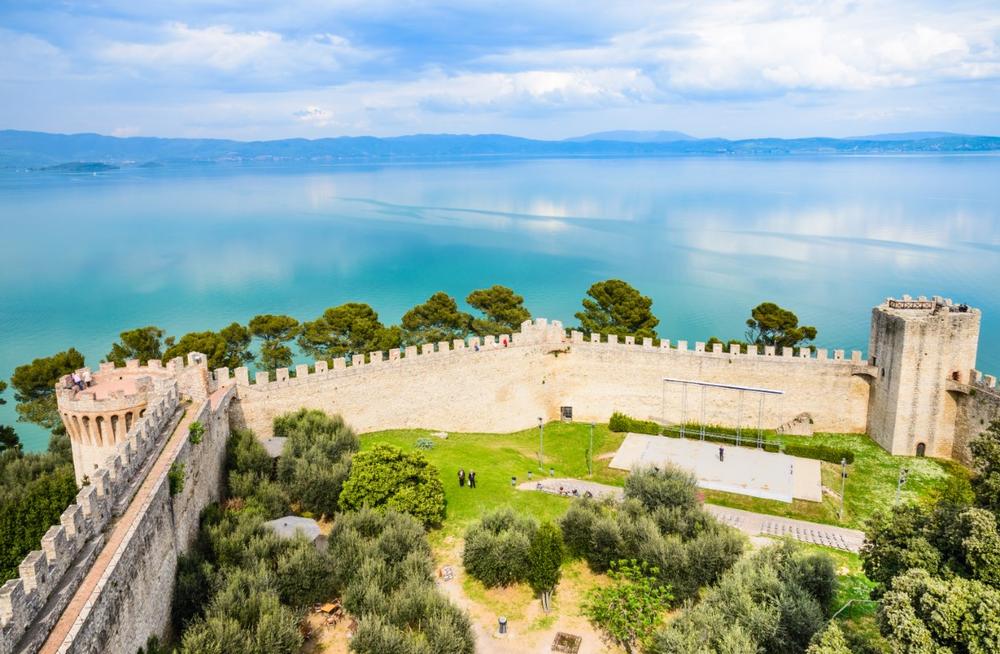
© travelbook/stock.adobe.com
Location:
Lake Trasimeno, Umbria, Central Italy
Highlights:
If you want a lake retreat that’s close to Italy’s cultural heavyweights but still feels undiscovered,
Lake Trasimeno is an incredible find. With peaceful shores, hilltop towns, and nature-rich trails, it’s a slower-paced alternative to Tuscany’s tourist centers.
Recommended For:
Nature lovers, birdwatchers, history seekers, and anyone looking to pair countryside tranquility with nearby cultural cities.
What I Love: ♥
The year-round La Valle Oasis, charming lakeside villages, ancient island monasteries, and the feeling of true Italian countryside calm.
- Explore eight picturesque towns scattered around the lakeshore and surrounding hills—each with its own charm and historic gems.
- Visit La Valle Oasis for audio-guided hikes, a wooden boardwalk, an observatory, and a bird ringing station ideal for nature lovers.
- Discover the lake’s islands, home to centuries-old castles, cathedrals, and monasteries waiting to be explored.
- Enjoy close proximity to cultural giants like Florence, Siena, Arezzo, Assisi, and Rome—all just a short drive away.
Distance from Rome:
Around 2 hours by car or 2.5 hours by train and bus.
How to Get to Lake Trasimeno:
From Rome, take a train to Terontola-Cortona or Passignano sul Trasimeno. Buses or taxis connect to towns and lakeside spots; boat rides are available to visit the islands.
📔 I get asked this a lot so I decided to include it:
-
Question: Where is Lake Como located?
Answer: Lake Como is located in Lombardy, Italy.
-
Question: What are the dimensions of Lake Como?
Answer: Lake Como is a glacial lake that spans fifty-six square miles and is 1,300 feet deep.
-
Question: What makes Lake Como unique in Europe?
Answer: The bottom of Lake Como reaches below sea level, making it the deepest lake in Europe outside of Norway.
-
Question: Why is Lake Como a popular retreat destination?
Answer: Lake Como is a popular destination for weekend, holiday, and summer retreats for aristocrats and wealthy individuals worldwide.
-
Question: What attractions and activities make Lake Como a great tourism destination?
Answer: Lake Como is known for its spas, outdoor recreation, and local farms, as well as many cultural sites and attractions around the lake.
Best Time for Day Trips Around Lake Como, Italy:
- April to June – Spring offers blooming gardens, mild weather, and stunning views perfect for villa visits and lake cruises.
- July to August – Summer is vibrant and lively—ideal for swimming, ferry-hopping, and exploring charming lakeside towns.
- September to October – Enjoy golden light, fewer crowds, and crisp air perfect for scenic hikes and vineyard visits.
- November – Quiet beauty with peaceful villages and great conditions for local cuisine and cultural spots.
- December to March – Winter offers cozy lakeside strolls, snow-capped mountain views, and festive ambiance in nearby towns.
Map:
Plan Your Trip












